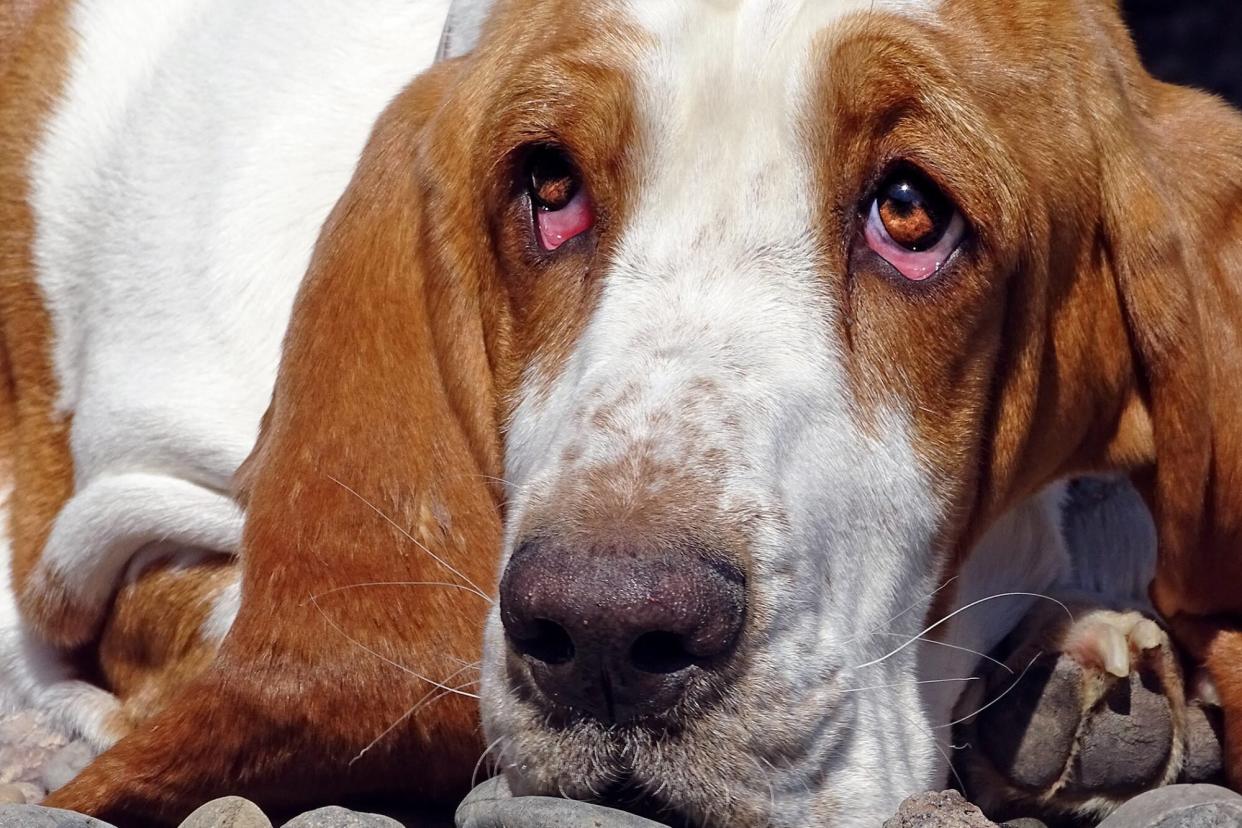Ectropion in Dogs: How Those Droopy Puppy Dog Eyes Might Actually Be a Sign of Illness

Trudy Gardner / Getty
While those sad puppy dog eyes are a trait beloved by many pet parents, droopy eyelids may signal that your dog has ectropion. This medical condition is characterized by a dog's eyelid (or eyelids) rolling outward. While it is not always a serious ailment that impacts your dog's eye function, it is something to learn more about and connect with your veterinarian to see how to best handle this condition with your pup.
What Is Ectropion in Dogs?
Ectropion is the opposite of entropion. "It's a condition in which the eyelids roll outward, which often results in a droopy or saggy lower eyelid," says Jo-Ann McKinnon, DVM, an ophthalmology specialist at VCA Regional Institute for Vet Emergencies and Referrals, in Chattanooga, Tenn. "The eyelid margin does not sit snugly against the eye."
She explains that the most common cause of ectropion is conformational or developmental—otherwise considered genetic. "It may even be considered a desirable trait, especially in our larger breeds like bloodhounds, Saint Bernards, and mastiffs." Some smaller breeds, such as cocker spaniels and English springer spaniels, can also be affected by ectropion. In cases of genetic ectropion, it is often identified when the dog is still a puppy.
But keep in mind that ectropion can also develop secondary to trauma to your dog's eye, especially if there is a laceration of the lower eyelid that does not heal correctly, McKinnon says. This can happen to a dog at any age.
What Are the Symptoms of Ectropion in Dogs?
If you notice that your dog's eyelids are sagging or rolling outward, they may have ectropion. Another thing to look for, according to McKinnon, would be discharge that builds up around their eyes. Because the eyelid is exposed, it may appear more red than usual as well because the openness of the eyelid exposes the ocular tissues, including the cornea and conjunctiva, to the environment.
RELATED: Cherry Eye: What It Is & When to Seek Help for Your Dog
Also, depending on the degree of ectropion, the eyelid may not be able to blink normally. "Blinking is an important protective mechanism of the eye that sweeps the tear film across the ocular tissues, removing debris," says McKinnon. "As a result, debris from the environment can lodge into or damage the exposed ocular tissues, which may have vision-threatening consequences."
Treatment for Ectropion in Dogs
If you are noticing symptoms of ectropion or suspect your dog may have this condition, it is important to make an appointment to visit your vet. "A veterinarian will evaluate the position and function of the eyelids and any negative impact on the exposed tissues of the eye," McKinnon explains.
The only treatment for serious cases of ectropion is surgery, McKinnon says. "If the degree of rolling outward of the eyelid impairs the blinking action, then surgical intervention may be recommended."
But surgery is not the only answer, especially if your dog's ectropion is not seriously impacting their quality of life. "Not all cases of ectropion require surgical correction. An ocular lubricant may be recommended to cushion the eye tissues from any environmental debris in those breeds where ectropion is a desirable trait and blink function is normal," McKinnon says.
You'll want to have your vet check your pooch's eyes twice a year to ensure the condition is not becoming more serious.
RELATED: Canine Eye Care: 5 Things to Know About Dog Eye Infections

